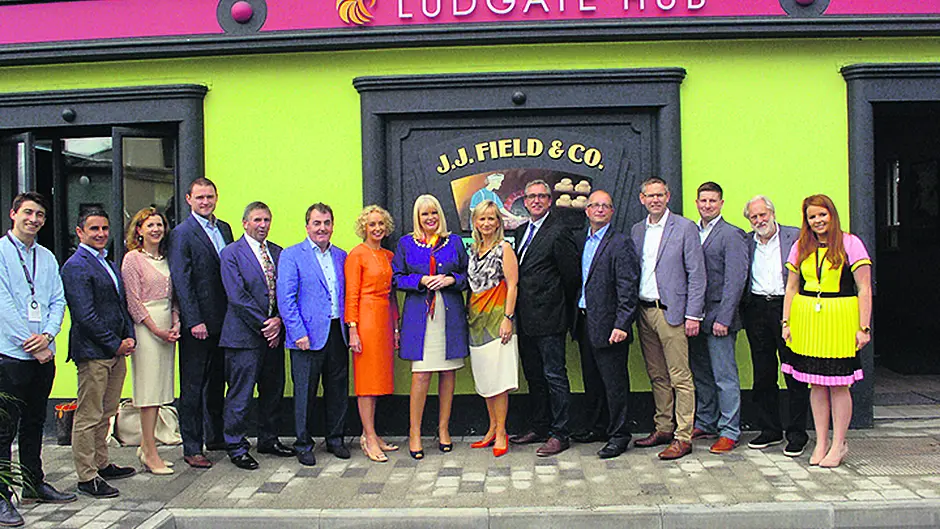Percy Ludgate, the 19th century computer designer, is regarded as West Cork's Steve Jobs. Now a team of TCD academics have unearthed fascinating details about the man who lent his name to Skibbereen's digital hub
BY DAVID FORSYTHE
JUST five years ago, you would have been hard-pressed to find anyone in West Cork who had even heard of Percy Ludgate, the pioneering computer genius who was born in Skibbereen on August 2nd 1883.
That all changed with the opening of the Ludgate Digital Hub in the town in 2016 on Townshend Street, the very street where Percy was born.
The digital start-up centre is a first for rural Ireland and so its founders decided there was no better man to name it after than West Cork’s answer to Steve Jobs.
As the Ludgate Hub has gone from strength-to-strength since its launch, interest in the mysterious Percy Ludgate has grown, too.
Despite his remarkable achievements, Ludgate, the man, remains something of an enigma and until relatively recently his life and work had attracted little academic interest. The truth is, we don’t know that much about Percy. There are few primary records and what we do know comes mostly from second and third-hand sources.
However, Dr Brian Coghlan from the school of computer science and statistics at Trinity College Dublin has led a small team researching the life and work of Percy Ludgate for several years now for the university’s computer science collection. He will be giving a talk on the team’s findings at the West Cork History Festival in Skibbereen next month, and it’s hoped that this event may prompt the discovery of further information about Percy and his work.
‘There are a huge number of unanswered questions about Percy Ludgate,’ said Brian. ‘We don’t know why his parents came to Skibbereen, we don’t know where he was for seven years before they reappear in Dublin, and we don’t know what inspired his designs. The only information we have about his personality came from his niece in Dublin, but even her original letters are now missing.’
What we do know, for sure, is that details of Percy’s design for his ‘analytical machine’ were published in the Scientific Proceedings of the Royal Dublin Society in April, 1909.
It is this remarkable achievement that has secured Percy’s place in Irish and international computing history. His was only the second ever comprehensive design for a general purpose computer. It followed the work of Charles Babbage 60 years earlier. What is remarkable about Ludgate’s design, though, is its relative simplicity.
Babbage’s work was based on precision engineering, using gears and cogs, and if it were ever built it would have been the size of a cathedral.
Ludgate’s design, on the other hand, used a far simpler system of rods and shuttles, possibly inspired by sliderules. If Ludgate’s analytical machine were to be constructed, it would fit in a 60cm cube and could even be portable.
Despite the ground-breaking ingenuity of his design, Ludgate’s machine was never built. Dr Coghlan believes that the outbreak of WWI was probably responsible.
Ludgate died in Dublin in 1922, from pneumonia, at the age of just 39, and so, it seemed, did any interest in his computer. Professor Brian Randell took up the case of Ludgate when he came across his work while researching early computers. He published a paper in 1971 that saw Ludgate’s name re-emerge in the history of computing. Dr Coghlan and his team have carried on this work and made several interesting discoveries in recent years.
Ludgate’s family were in Ireland, and indeed Co Cork, from at least the mid-18th century. On his paternal side, his family roots were near Mallow in the townland of Kilshannig, where his ancestors are present in the census of 1766.
His mother was Mary McMahon, born in Sussex in England, and both her parents originally came from Ireland as well. Percy’s father Michael was born in Kilshannig and joined the British army as a young man.
After postings in Britain and India, he is recorded as collecting his pension in Skibbereen in 1882, just before Percy was born. The family next appear in Dublin in 1890 where it is believed Michael was working as a shorthand teacher.
In 1898 Percy joined the civil service and in 1902 he took exams and was the top Irish applicant. He did not gain a permanent post, however, as he failed the necessary medical and seems to have then become a clerk at a corn merchants in Dublin.
‘He was clearly very intelligent,’ said Dr Coghlan. ‘We can only speculate as to what inspired him, but it seems to be during this period that he began working seriously on his ideas.’
The fact that Ludgate’s research was only ever done in his spare time makes his achievement even more remarkable. During WWI, he carried out vital work for a War Office committee which was very well regarded. From there, he went to train as an accountant for the Dublin firm of Kevan & Son. He qualified as an accountant in 1917.
Dr Coghlan and his team are actively seeking new information that might shed more light on the life and work of Percy Ludgate. ‘He was only 39 when he died,’ said Dr Coghlan, so he had no direct descendants. We are really hoping to find a relative or someone else who can help.’
Dr Coghlan said there are three main areas of interest the research team is keen on pursuing: finding the plans for the analytical machine that have never been recovered; finding out more about Percy Ludgate and his life through letters, papers etc; and thirdly, attempting to recreate the plans for the analytical machine.
‘There were probably 50-plus drawings,’ said Brian. ‘So that would be a dream if we could somehow locate them if they are still in existence somewhere. It would also be great to find out a little more about the man himself. Someone, somewhere might have some letters or photos that might contain something that ,however small, may be of real importance.’
Percy’s uncle was a journalist based in Cork and there was quite an extended Ludgate family in Mallow and Cork, as well as the Skibbereen connection, so it is hoped there may be someone out there who still has something relevant that can help with the research.
Dr Brian Coghlan will present his talk on Percy Ludgate at the West Cork History Festival at 10am on Saturday, August 10th at Rosebank, adjacent to the Liss Ard estate.
•For more see www.westcorkhistoryfestival.org.
THE West Cork History Festival and the Ludgate Hub are partnering this year to unveil a new event.
In conjunction with the focus on Ludgate’s life and work, as well as the appeal for his missing papers, this year will see the Festival’s first workshop for children.
Searching for Percy will be a digital history quest for eight-year-olds and up (and their grown-ups), discovering the every day lives of West Cork’s most famous residents, past and present.
Throughout history, West Cork people have played a significant role, nationally and internationally, and have had a global influence on areas from sport to space, politics and industry.
This workshop will be run by Danielle O’Donovan, programme manager at the Nano Nagle Centre in Cork city. It will take place at the Ludgate Hub on Townshend St in Skibbereen at 10am on Saturday August 10th.
The workshop will run for the morning and cost €5 per child, with the accompanying adult going free.
Please bring your own device to the workshop.
Tickets available at https://www.eventbrite.ie/e/west-cork-history-festival-tickets-61964987947









